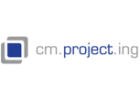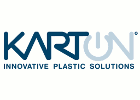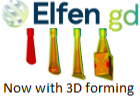While hardly anyone had heard of the term “warm edge” just 10 short years ago, statutory requirements and increasing environmental awareness have ensured a gradual decline in the use of spacer bars made from aluminium or stainless steel.
The number of providers of warm edge spacer bars has since grown accordingly – which makes it all the more important to know the differences between the products. Especially when it comes to the thermal values of the spacer bars, objective and comparable data are vital. Because these values support one of the most critical sales arguments for windows as the final product.
Generally speaking, it must be in the interest of providers to create transparency about the properties of a product, and in doing so make their customers feel confident about its quality. Just how important this is can be seen in the diesel emissions scandal in the automotive industry. “Stringent tests for insulating glass units have long been prescribed by the RAL Quality Association. Our top priority as far as our customers are concerned is to be totally transparent and to comply with uniform guidelines for spacer bars. Everything else is to the detriment of our credibility,” says Victoria Renz-Kiefel, Managing Director of SWISSPACER.
In the “warm edge” working group of Bundesverband Flachglas, the company is bracing itself for the regular verification of the thermal conductivity of warm edge spacer bars by ift Rosenheim (German Window Technology Institute Rosenheim). The working group also developed the new ift guideline VE-17/1 ”Product characteristics and test procedures for proving the usability of spacer bar systems in the glazing edge of insulating glass units”. The guideline’s objective is to describe uniform test procedures that demonstrate the usability of the products in the glazing edge of insulating glass units.
The independent procedure for evaluating different spacer bars
The performance of the glazing edge flows into the calculation of the heat transfer coefficient for a window (Uw) via the length-related Psi value. This Psi value of the window or the façade describes the heat losses along the edge of the glass. The value takes into consideration the interaction of frame profile, glass, spacer bars and sealants, and is essentially determined by the thermal conductivity of the spacer bar. It can therefore be determined for the glazing edge overall only with specific information on the frame and glass.
But how is the Psi value arrived at? And what exactly does an independent certificate look like for the important components of the spacer bar? First, the thermal conductivity of the spacer bar, the so-called lambda value (λ), is determined by an independent institute (ift Rosenheim). This is done using a standardised measuring method established in the “warm edge” working group (ift guideline WA-17/1 “Thermally improved spacer bars – Determining the equivalent thermal conductivity through measurement”). The lambda value (W/mK) represents the thermal conductivity of a material and is one of the elementary values for assessing and determining that material’s suitability for construction or refurbishment purposes.
Moreover, each spacer bar achieves a very specific value. This is because both the precise composition of the material and the structure of the spacer bars vary from provider to provider and influence the thermal conductivity – for example, through the additional metal-coated foils that prevent the escape of the gas filling and the penetration of water vapour.
The exact values can be determined through measurements taken by independent institutes such as ift Rosenheim. We therefore speak of a lambda value that has been measured or determined using measuring equipment. In contrast to this, some providers supply data sheets or certificates with Psi values calculated in accordance with EN ISO 10077-2. In the case of such certificates, it can be assumed that the spacer bar provider does not belong to the “warm edge” working group and is not in possession of a comparable data sheet with measured values, but instead indicates calculated values.
In order for the information on the thermal conductivity of the various spacer bar systems to be comparable, despite all the complexity, Bundesverband Flachglas carried out a research project and then transferred the results to a guideline (ift guideline WA-08/3 “Thermally improved spacer bars – Part 1: Determination of representative Psi values for profile sections of windows”). With this guideline, so-called representative Psi values can now be determined under exactly the same constraints for a uniform presentation of the results. In doing so, the representative Psi values are based on four common frame materials and two common glazing types – and thus provide an objective basis for comparison.
The Uw value: The measure of a window’s energy loss
The Uw value determines the loss of heat that passes through a building’s structural elements from inside to outside. It describes the flow of heat that is transferred through a 1 m² component from inside to outside with a temperature difference of 1 Kelvin (K). The Uw value is indicated in W/m²K. The smaller the value, the more efficiently the component is protected against heat loss, allowing considerable costs to be saved in the long term.
It is therefore important to know the precise Ug value of the double or triple glazing and the Uf value of the aluminium, wood, PVC or wood/aluminium window frame. Ultimately, this is the only way to determine the precise Uw value of a window, which is composed of the area-weighted values of glazing and frame as well as the length-related contribution of the linear heat transfer coefficient Psi.
























